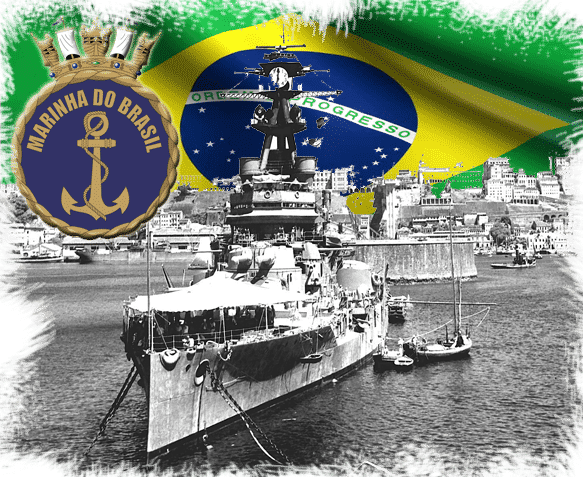
Marinha do Brasil WW2
Already imposing in the great war, the Brazilian Naval forces were still a major player of South America during the second, one of the three fleets with a blue water navy.
By then she was arguably the second naval force behind Argentina, the eternal rival, and in front of Chile. Brazil had an embryo of local maritime industry, enough to laid down several destroyers during wartime, but not yet the financial means to lay down major units. In 1939, Brazil was neutral, aligned with the isolationist positions of the northern “big brother”, but the relentless U-boat warfare of the Pacific eventually pushed the country to declare war on Germany in 1942. From then on, Brazil became took part actively in the conflict.
The heritage of WW1

A camouflaged Sao Paulo in 1917
The Brazilian Navy in WW1 was arguably the largest and best-equipped in South America. The 1905 naval plan allowed the construction of no less than two Dreadnoughts, two cruisers, ten destroyers, and three submarines. The Minas Gerais was even more powerful than the HMS Dreadnought and the British press soon claimed this was a disguised order for another nation, namely Germany as German investors were present in strength in Brazil.
A third, even more impressive battleship was ordered as soon it was learned the Argentines ordered the Rivadavia. This was the superlative Rio de Janeiro, an amazing “battle wagon” bristling with no less than twelve 305 mm guns. No yet completed she was canceled and the company tried to resell it to Turkey when the war broke out, and she was requisitioned as HMS Agincourt.
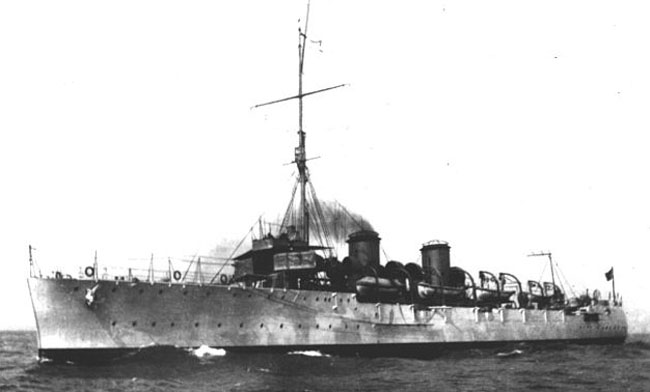
However this strength was not to be used in anger: In 1914, Brazil was reeling from a poorly digested economic crisis and topped by the isolationism doctrine inherited from US Monroe policy. Brazil was neutral but from 1916 onwards U-Boats started to attack Brazilian merchant traffic, and losses amounted to a total blockade on coffee exports. In 1917, the unrestricted submarine warfare intensified this, and Brazil eventually declared war on Germany on October 24, 1917.
From then on, a squadron was set up to operate in northwestern Africa, with 2 cruisers, 4 destroyers and support ships only on site for operation three months before the capitulation. In southern Atlantic the fleet took part in convoys escort missions while the battleships were sent for modernization in the USA in order to be integrated into the British Grand Fleet.
Strength in 1939
The “blue water navy” fleet included valuable but aging units, starting with two dreadnought battleships, 2 light cruisers, 8 destroyers, 4 submersibles, 3 gunboats (and a dozen lighter, riverine ones), and two tankers. A shipbuilding plan was underway to replace the old-fashioned Para class destroyers (1906). In 1938, in fact, six class H destroyers were ordered in Great Britain, while six minelayers were under construction. But reinforcements in WW2 were even more impressive, making the fleet largely ahead of South American rival Argentina, due to Brazil’s declaration of war on Germany and contribution to the war effort.
Brazilian Navy Details
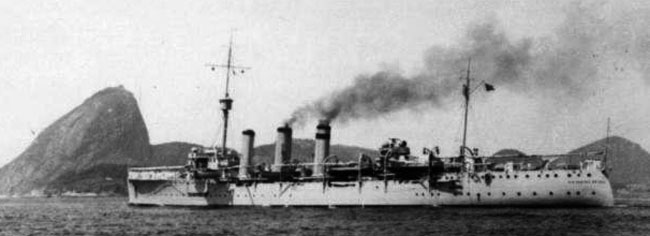
In detail, battleships such as cruisers and destroyers were originally from UK, while submersibles were ordered in Italy. The battleships of the Minas Gerais class had been in their time the most powerful warships in the world. A supremacy that once made Brazil believe that it was working behind the scenes for another great naval power or was becoming a major naval force. In reality, from the dream to the country’s finances, quickly undermined by an unprecedented crisis, there was only one step. The initial program of 1908 was quickly abandoned. Apart from the submersibles and the acquisition of a British destroyer in 1920, there were only brief modernizations carried out between the two world wars. The navy also knew the Lieutenants Revolts (1922–27) and Constitutionalist war (1932), in the context of the 1930 revolution.
1939 Brazilian Naval plan
In 1939, the Brazilian fleet was in the midst of a major new naval plan, as most of its forces were composed of obsolete ships. Even the two Minas Gerais were lightyears away from the latest battleships deployed by the Axis.
The plan was quickly amputated from the British H-type destroyers, requisitioned (see Royal Navy), but this did not prevent the local Iha das Cobras shipyards from delivering in time 3 destroyers inspired by the “Mahan” in 1943-44, then 6 more modest ones in 1949-51 (they had been under construction since 1942).
An important point is that these ships were foreign-built. Pre-ww1 units were British-built, Interwar submarines were Italian, and WW2 transfers were North American while new constructions clearly denoted a strong USN design influence. Yards with holds large enough for battleships existed, however no project of modern battleship or cruiser existed to replace the 1910 Dreadnoughts, nor rebuilding programme like for Italian or British battleships.
New wartime aquisitions
The US Navy transferred 8 escort destroyers and 16 PC-type submarine hunters, so that Brazil, which declared war on the Axis in 1942, could participate in escort missions in the South Atlantic.
For her part, the Royal Navy sent to the Brazilians six armed trawlers for extra ASW coverage in 1942. The only loss “in combat” of the Brazilian Navy was the cruiser Bahia, which served as a rescue ship for American pilots in the South Pacific, and exploded for a reason still unsolved to this day (torpedo?) in July 1945. This late engagement was not conclusive, but Brazil was the only one of the major South American industrial nations to effectively engage resolutely her forces (naval, air and land) against the axis.
The Brazilian Navy at war
Obsolete in terms of assets and unable to guarantee security on the Brazilian coast by early 1942, with the new threat of U-Boats roaming the American east coast, the Brazilian Navy was forced to subordinate itself to the US Navy. Several naval bases were established in the North and Northeast regions of Brazil, creating the Allied Command of the South Atlantic.
Even so, within its limitations and with some reorganization with ships transfers from the US, the Brazilian Navy actively participated in the ASW war in the South Atlantic and Central Atlantic zone. Brazilian ships would also patrol the Caribbean, and escorted convoys to North Africa and in the Mediterranean at large. The Brazilian Navy in all was responsible for conducting 574 escort missions, protecting 3 164 merchant ships of many nationalities.
During this, U-Boats only claimed three vessels. The Brazilian Navy made 66 reported attacks (By Kriegsmarine own accounts) against U-Boats. Losses amounted to 1,100 Brazilians, with the 32 ships of the Merchant Navy sank and a single Navy vessel. Among the merchant navy deads, 470 were crewmen and 502 passengers. When the Brazilian Navy Vital de Oliveira sank, 99 men went with her. 350 more were lost when the corvette Camaquã sank on July 21, 1944 and on the cruiser Bahia on July 4, 1945, added 333 further victims.
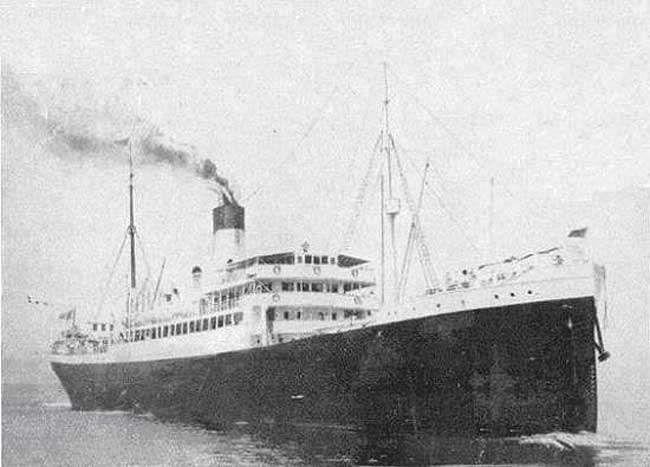
The escort steamer SS Campos (1895)
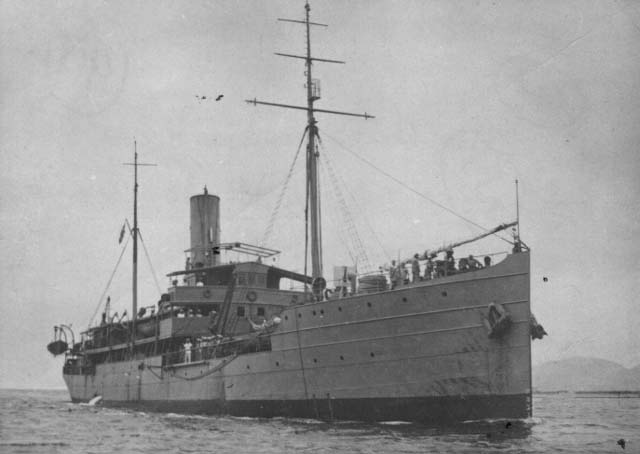
The escort vessel NHi Vital de Oliveira, sank by an U-Boat in 1944.
Battle of the Atlantic
The navy was largely obsolete when Brazil entered the war. It happened gradually as German U-boats accentuated their pressure on Atlantic merchant traffic. In early 1942, German submarines sank gradually more tonnage in both the North and south Atlantic. After the country declared war on Germany after many losses, the Navy received full support of the USN to take part of her share of operations, notably to cover the South Atlantic, with American resources. Brazilian ships also gradually covered the Central Atlantic and the Caribbean, guarding Allied convoys bound for North Africa and the Mediterranean. In all, the Marinha do Brasil executed 574 convoy missions, protecting 3,164 merchant ships. Only three vessels were ever sunk while German documentation report 66 U-boats had been attacked.
For more support, the USN installed several naval bases in the North and Northeast of Brazil. The headquarters of the Allied Command Atlantic South was installed also in Brazil. Brazilian report in 1945 alleged a total of nine U-boats destroyed along the Brazilian coast, the U-164, U-128, U-590, U-513, U-662, U-598, U-199, U-591, and U-161. In total 1,100 Brazilians died during the Battle of the Atlantic alone, since during the war a total of 32 Brazilian merchant vessels were sunk, plus the cruiser Bahia (still in mysterious circumstances, 4 July 1945). Auxiliary ship Vital de Oliveira was attacked and sunk by a German submarine. Not related, the corvette Camaquã also on 21 July 1944 capsized during a storm while escorting a convoy.
The Brazilian expeditionary force
The Brazilian navy also operated overseas, to be more precise, in the Mediterranean, with the Força Expedicionária Brasileira (FEB). However the bulk of these forces were ground forces under Brazilian air support. The Navy own role was limited to convoy escort bound to Gibraltar, while the allies took charge of conveying ships to the coast of Italy. The South Atlantic road to Gibraltar comprised 614 wartime convoys, 3,164 merchant and transport troop ships. Thanks to USN transfers, Brazilian frigates and submarines used mines and depth charges and sank twelve Axis submarines (one Italian and eleven German). The Italian submarine was Archimede.
Order of battle
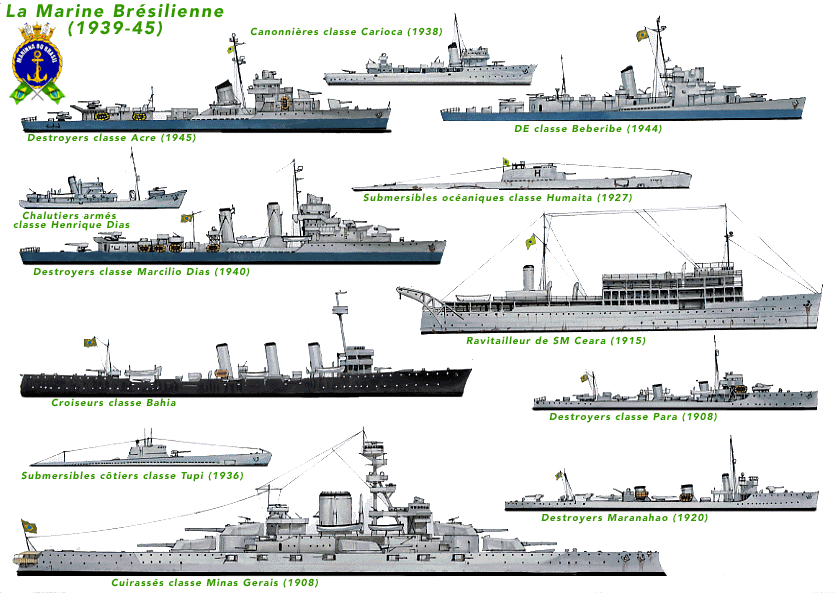
Brazilian Battleships:
-Class Minas Gerais. (1908: Minas Gerais and Sao Paulo, only the first was modernized). Rio de Jaineiro was canceled.
Brazilian cruisers:
-Class Bahia (1909. Bahia, Rio Grande Do Sul)
destroyers:
-Class Para (1908-10, originally 10 units of the English River type, 7 in 1939, 6 in 1942);
Maranhao (British Type P, 1913, acquired in 1920);
-Classe Marcilio Dias (from 1943, 3 units)
–Acre class (May 1945 and beyond, 6 units)
transfers:
-Escort DDs Beberibe class (8 units type DET transferred in 1944-45).
–Gioana class subme hunters (PC type, 16 units transferred in 1942-43).
-Armed trawlers class Henrique Dias (6 units ex-British, transferred and completed on site in 1942).
submersibles:
–Humaita (1927, oceanic)
–Tupi class (3 units, 1936-37, Coastal)
Miscellaneous
–Carioca class mine destroyers (6 DDs, 1938-39)
–Pernambuco (1910 riverine gunboat)
–Parnaiba (1937 riverine gunboat)
–Paraguacu (1938 riverine gunboat).
–Ceara (1915 Submarine depot ship, workshop).
–Belmonte (Destroyers supply ship, 1912).
–Rio Pardo (sub hunter, 1943).
Brazilian Navy’s own ships in detail
Minas Gerais class battleship (1912)
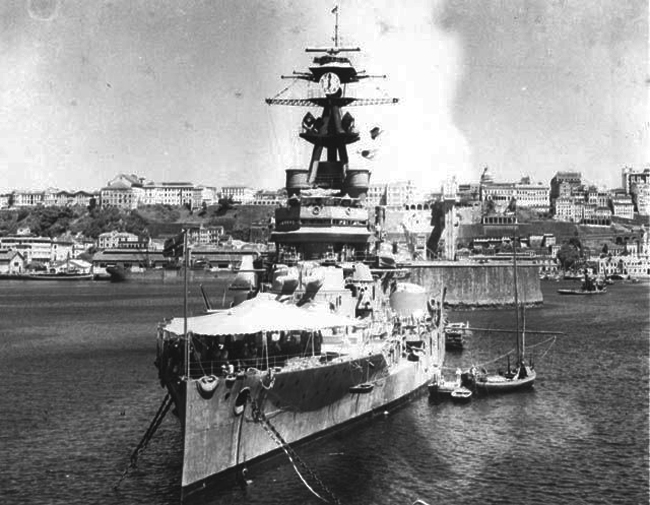
Minas Gerais in Salvador, 1945
Certainly, the most famous Brazilian ships were the two battleships Minas Gerais and Sao Paulo. They had a long career (1910-1953) and are seen remembered with nostalgy today. They were ordered in Great Britain, like Chile a little later for its two “Almirante”. Brazil was the first of three major South American naval powers to purchasing of this new type of battleship, imposing a new standard, but also taking a huge strain in terms of budget.
They were the heart of the ambitious new program of 1904, and were to be followed by two other units for 1914: The Rio de Janeiro (requisitioned, completed as HMS Agincourt) and the Riachuelo, never built.
These two Dreadnoughts were so powerful (the most powerful in the world at their completion) that the press was thinking this was a disguised command of another great naval power, possibly Germany. In truth, these two ships antagonized Argentina which promptly passed orders of two dreadnoughts to American shipyards, the Rivadavia and Moreno. This was the start of the South American “dreadnought race”, joined by Chile.
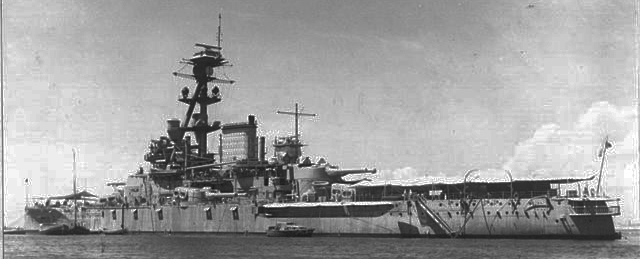
De facto with these ships, Brazil became a naval ally of weight in the Atlantic, and the US Navy soon integrated the Brazilian navy in common exercises. In embassies, talks of “Panamericanism” were backed by these. But this ambitious program was shortened in 1910: A mutiny broke out in Minas Gerais shortly after her commissioning in November 1910, while Brazil went through a serious economic crisis and a recession. The program was interrupted and the Rio de Janeiro, barely started, resold and temporarily purchased by Turkey.
On a technical level, the Minas Gerais class were largely inspired by the HMS Dreadnought, launched just a year ago, but with an additional turret forward, giving a total of 8 main guns in hunt or retreat and a broadside of ten guns, which was really exceptional at the time. The secondary artillery was not forgotten, with a full array of 120-mm artillery pieces in barbettes and a comfortable tertiary artillery. Their armored citadel was made with Krupp steel, but assembled at Armstrong-Withworth and Co.
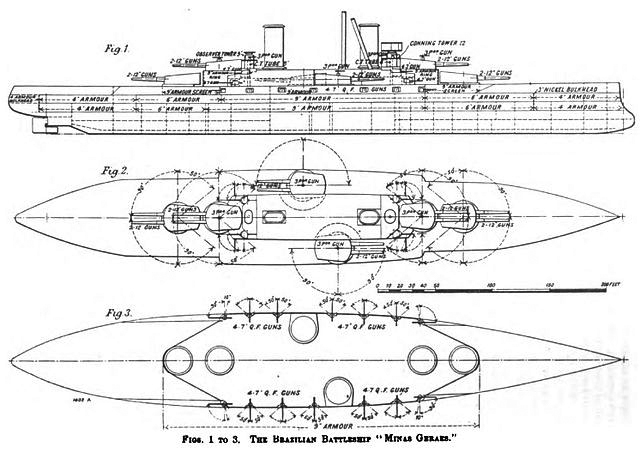
In 1917, on October 24, according to the big brother of the North, Brazil declared war on the central powers and the Brazilian navy was engaged alongside the Royal Navy and the US Navy. Minas Gerais and Sao Paulo were based at Scapa Flow and integrated into the Grand Fleet. But their original sighting equipment began to date, and Sao Paulo, which was lacking in maintenance, reached the New York gate in 1918, wiping a serious damage in the process of crossing, ending her trip pulled by an American battleship.
She remained for two years in the port for important transformations, as was Minas Gerais later. In 1932, these two ships had once again changed their appearance, adopting a modified footbridge, new boilers with turbines instead of their old coal propulsion, their chimneys being grouped together, also gaining new telemetry, and light AAA.
During the Second World War, these two ships saw little service, Brazil not committing itself against the axis until 1942. They were never deployed in distant operations, unlike other ships of the fleet, but escort missions, not camouflaged it seems. In 1945, they had reached retirement age, but they remained until 1950 as training ships, before becoming floating pontoons, to be stricken and broken up in 1951 and 1953.

Specifications
Displacement: 19,280t, 21,200t FL
Dimensions: 165 x 25.3 x 8.5m
Propulsion: 2 shafts VTE Vickers engines, 18 Babcox boilers, 23,500 hp, 21 knots max.
Armor: Decks 75, Turrets 305, Belt 230, Casemate 254, Blockhaus, CT 305 mm
Crew: 900
Armament: 12 x 305 mm, 22 x 120 mm, 8 x 37 mm AA.
Bahia class cruisers (1908)
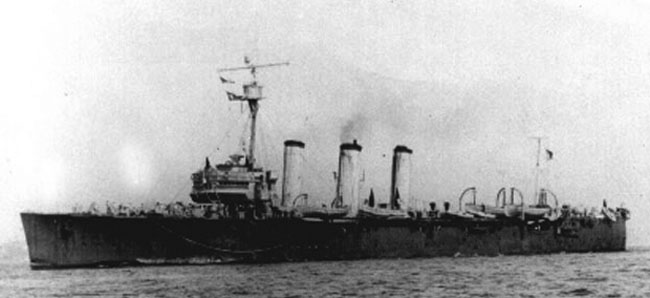
The only Brazilian cruisers active in 1939, the Bahia and Rio Grande Do Sul had been part of the large naval plan of 1905. They had been ordered in Britain, at Laird shipyard, and were typical of the style of light cruisers of that time. 122 m long, they were given five turbines, and carried 150 t of coal, up to 650 tons in wartime, for a top speed of 27 knots (50 km/h, 31 mph) on trials and designed speed of 25 knots (46 km/h, 29 mph) at full load. They could cover 1,400 nautical miles (2,600 km) at 23.5 knots and up to 3,500 nautical miles at 10 knots. Armour was light, just 19 mm (0.748 in) of her decks and 76 mm (3 in) for the Conning tower.
They were started in 1907 and completed in 1909, with the standard artillery of 6-in (152 mm) guns. They stealthily participated in the operations of the Brazilian fleet in the Grand Fleet in 1917-18, and spent the rest of their operational life without major changes, before a refit and part overhaul in 1925-26 in Rio, including the reduction of their masts, and the addition of AAA, new oil boilers and new turbines from Thornycroft.
Their operational life during the Second World War was quite active: They patrolled from 1943 in the South Atlantic, escorting convoys, then reached the Mediterranean. It was there that Bahia sank, because of a probably accidental explosion in 1945. She then served as rescue and resting ship for pilots stressed by combats in the Pacific. The Rio Grande on her side survived as a training ship until 1948.

Specifications
Displacement: 3100t, 3420t FL
Dimensions: 122.3 x 11.9 x 4.75m
Propulsion: 5 Parsons steam turbines, ten Yarrow boilers, 27 knots
Armor: Decks 19 mm, CT 76 mm
Armament: 10× 120 mm (4.7 in)/50, 6× 3-pdr (47 mm)/50, 3x 20 mm (0.79 in) Madsen guns, 7 mm (0.28 in) Hotchkiss MG, 4x 533 mm (21.0 in) TTs
Para class destroyers (1908)

10 destroyers ordered in Great Britain, but were finally built in Rio, on the “River” mode. These were the first high seas model with a forecastle. With 650 tons and a light armament, they were already obsolete in 1917, and even more in 1939 despite some limited refits and symbolic upgrades. Some were removed from service in 1931, the Amazonas and later in 1933, para and Parana. In 1939, the Alagoa was in turn withdrawn from service, but the others served until 1944. The new Dias and Acre were to replace them. With a limited radius of action, they served mainly in territorial waters, armed with some ASW grenades and two light AA guns.

Specifications
Displacement: 650t, 800t FL
Dimensions: 78 x 8 x 2.10 m
Propulsion: 2 shafts Parsons turbines, 4 boilers, 18,000 hp. 31 knots.
Crew: 80
Armament: 2 x 102 mm, 2 x 20 mm AA, 4 TT 533 mm, 2 ASW DC racks.
Destroyer Maranhao (1913)
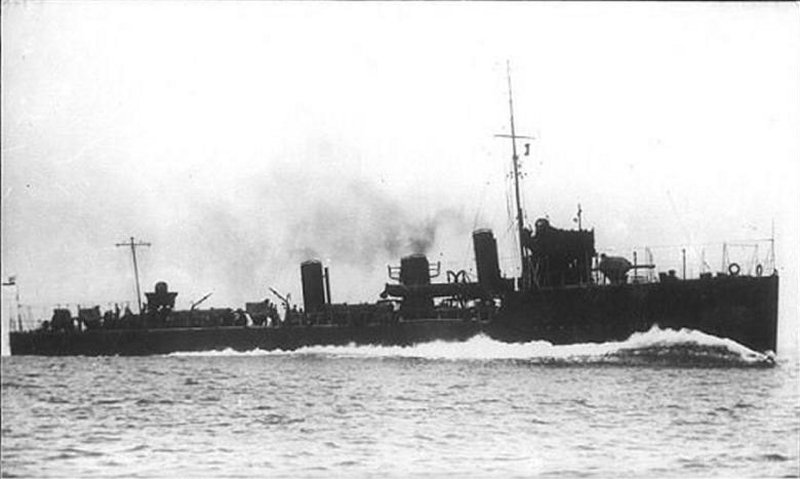
This was basically a K-type destroyer, declared surplus and acquired in 1920. A former British Acasta-class destroyer built 1912–1913, in commission until 1923. 980 ton ship, capable of 32 knots thanks to 2-shaft Parsons steam turbines and Yarrow-type oil-fired boilers. Armed with three QF 4-inch (101.6 mm) L/40 Mark IV guns, on P Mk. IX mounts and one QF 2-pounder pom-pom Mk. II plus two single tubes for 21 inches (533 mm) torpedoes. The HMS porpoise was decommissioned, sold 23 February 1920 back to Thornycroft for resale to Brazil. She became Brazilian Alexandrino Deaenca, later renamed Maranhao, in service during WW2 despite her age. She patrolled along the merchant traffic convoy lines and was discarded in 1945.

Specifications
Displacement: 650t, 800t FL
Dimensions: 78 x 8 x 2.10 m
Propulsion: 2 shafts Parsons turbines, 4 boilers, 18,000 hp. 31 knots.
Crew: 80
Armament: 2 x 102 mm, 2 x 20 mm AA, 4 TT 533 mm, 2 ASW DC racks.
Marcilio Dias class destroyers (1940)
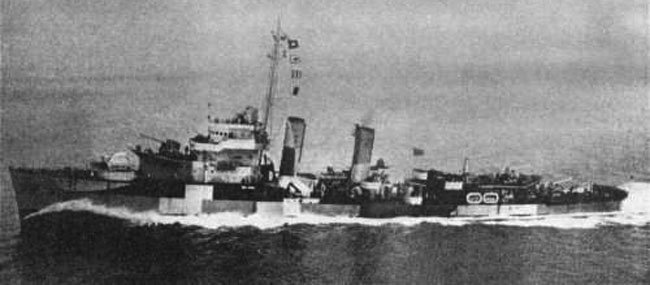
A camouflaged Greenhalg in 1945.
These ships were decided when the war broke out in Europe. They successively succeeded the ancient Para, and were built at Ilha da Cobras (Rio de Janeiro) yards, modeled on the plans of American destroyers of the Mahan class, with the same armament. A disguised way for the US to “sell” destroyers in Brazil.
The “M” class included the Greenhalg, Marcilio Dias and Mariz E Barros. They were launched in 1940-41, but not operational until 1943-44. They successfully performed their escort duties in the South Atlantic, although none claimed authenticated victory over a U-Boote. These were rare in this sector at that time… They remained in service long after the war, in 1966 for the first two and 1972 for the Barros.

Specifications
Displacement: 1500t, 2200t FL
Dimensions: 108.81 x 10.61 x 2.99 m
Propulsion: 2 shaft General Electric turbines, 4 boilers, 42,800 hp=36.5 knots.
Crew: 190
Armament 4 x 127, 4 x 40 mm (1×4), 4 x 20 mm AA, 2×2 TT 533 mm, 2 ASW DCT
Acre class destroyers (1943)
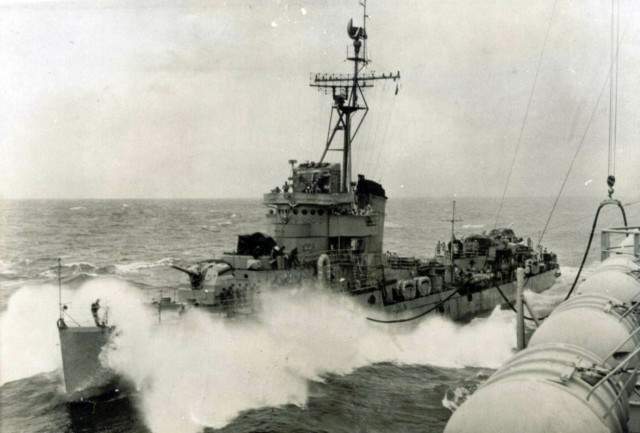
These 6 destroyers (Acre, Ajuricaba, Amazonas, Apa, Araguary and Araguaya), or class “A” were decided during the war, to reinforce the Dias and to replace the 6 class H destroyers ordered in Great Britain before the war and requisitioned. They had been inspired by American destroyers, borrowing their equipment, and built at the site of Ilha da Cobras shipyards in Rio. They were launched in November 1943 for the first two, May 1945 for three others and July 1946 for the last. But they were not completed until 1949 (Araguaya) and 1951 (Ajuricaba), making a consistent cold war career.

Specifications
Displacement: 1340t, 1800t FL
Dimensions: 98.45 x 10.67 x 2.59 m
Propulsion: 2 shafts 2 Parsons turbines, 3 boilers, 34,000 hp. and 35.5 knots max.
Crew: 150
Armament: 4 x 127, 2 x 40 mm (1×2), 4 x 20 mm AA, 2 DC ASW Throwers.
Babitonga class escort destroyers (1943)
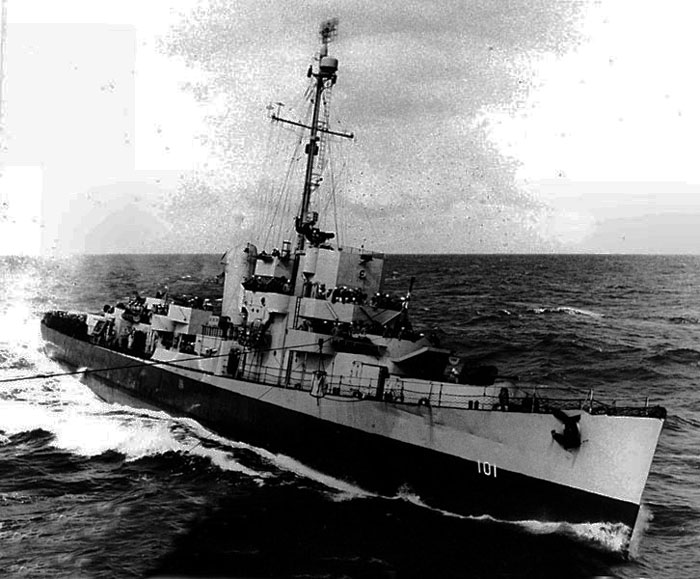
In 1943 the Americans decided to rent to the Brazilian navy ill-equipped escort units so that she could take charge of these missions in the South Atlantic. No less than 8 units of the standard type “DET” diesel-electric turbines were transferred in late 1944 and early 1945, the Beberibe, Babitonga, Baependi, Bauru, Benevento, Bertioga, Bocaina and Bracui. They played their part zealously, even though the U-Bootes did not venture into their sector, and then were transferred to the Pacific where they hardly had the opportunity to shine. They began to retire in 1968, until 1975.

Specifications
Displacement: 1253t, 1602t FL
Dimensions: 93,27 x 11,15 x 3,20 m
Propulsion: 2 shaft electric diesel turbines, 6,000 hp. 21 knots max.
Crew: 186
Armament: 4 x 76, 4 x 40 mm (1×4) AA, 8 x 20 mm AA, 3 x 533 mm TTs, 1 ASW DCT, 2×10 DCR ASW.
Gioana class sub hunters (1942)
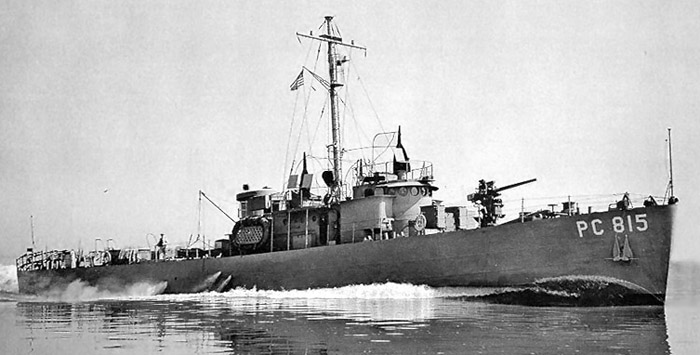
Sub-chasers of the standard PC type, 16 units transferred in 1942-43. The PC-boats were the famous WW2 mass-producedn cheap submarine hunters of the USN. They were deployed on all fronts.
Specifications as the American PC type. There was also a properly Brazilian sub-chaser called Rio Pardo in WW2, a 132 ton ship, 36.58 m long fitted with three diesels which developed together 1890 hp for 20 knots. She was apparently armed by a 20 mm cannon and was launched 29.11.1943 at Ilha das Cobras, Rio de Janeiro shipyard. She served at the end of the war and was converted as a transport ship in 1952.
Henrique Dias class armed trawlers (1942)
In order to cope with its involvement in the war and its role ASM escort in the South Atlantic, Brazil recovered the 6 armed trawlers ordered urgently by the Royal Navy at the site Henrique Lage of Ilha do Viana in 1941. On August 24, 1942 they were retroceded by the Royal Navy (a compensation for the 6 destroyers requisitioned on his side). Directly derived from deep-sea fishing trawlers, charcoal-powered, these vessels were well suited to prolonged U-boat hunting. They were completed in 1942-43 and participated actively in the defense of convoys and the patrol until 1945. They were removed from military lists in the 1950s and served for many years in their natural role of trawlers.
The class comprised the Barreto de Menezes (F 6), Felipe Camarao (F 2), Fernandes Vieira (F 1), Henrique Dias (F 3), Matias de Albuquerque (F 4)and Vidal de Negreiros (F 5).

Specifications
Displacement: 813t, 920t FL
Dimensions: 45.80 x 8.53 x 4.88 m
Propulsion: 1 shaft TE engine, 2000 hp. and 12.5 knots max.
Crew: 28
Armament: 2 x 76, 4 x ASW DCL mortars.
Humaita oceanic submarine (1927)

The Humaita was commissioned as a “submersible cruiser”, with a large radius of action and great depth, to Italy in 1925, modeled on the Balilla, but with some technical innovations and 8 wells mines. Built in OTO Muggiano, she was operational in 1929 and served in the South Pacific and Atlantic until 1945. She will be stricken and broken up in 1951.

Specifications
Displacement: 1390t/1884t FL Surf./Sub.
Dimensions: 87 x 7.80 x 4 m
Propulsion: 2 shafts Ansaldo diesels, 2 electric motors 4900/900 hp. 18.5/9 knots surf./sub.
Crew: 61
Armament: 1 x 76 mm, 6 x 533 mm (4 bow, 2 stern) TTs, 16 mines.
Tupi class coastal submarines (1936)
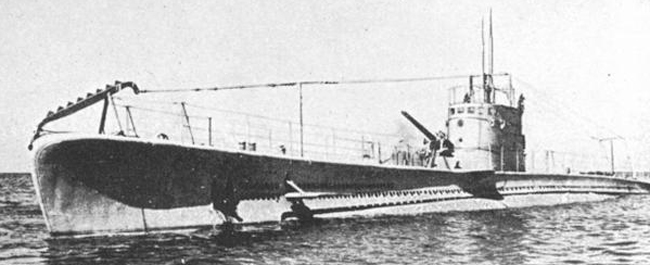
Faithful customer of Italian shipyards, Brazil bought in 1938 three submersibles to replace those of the type F, dating from 1913. These coastal units (Tupi, Timbira, Tamoio) were those of the Adua class, of the coastal type Bernadis, were the former Ascianti, Gondar and Neghelli. In particular, they had to restore balance with Argentina and its three Santa Fe, of the same type and the same manufacturer. Their coastal nature did not prevent them from crashing into the Mediterranean, adding to the Humaita. They were back in France in 1945 and remained in service until 1960.

Specifications
Displacement: 620t, 853t; surf./Sub.
Dimensions: 60 x 6.40 x 4.60 m
Propulsion: 2 shaft diesel FIAT, 2 electric motors 1350/800 hp, 14/7.5 knots surf./sub.
Crew: 42
Armament: 1 x 75, 6 x 533 mm (4 bow, 2 stern) TTs, 2 x 13 mm AA MGs.
Carioca class minelayers (1938)
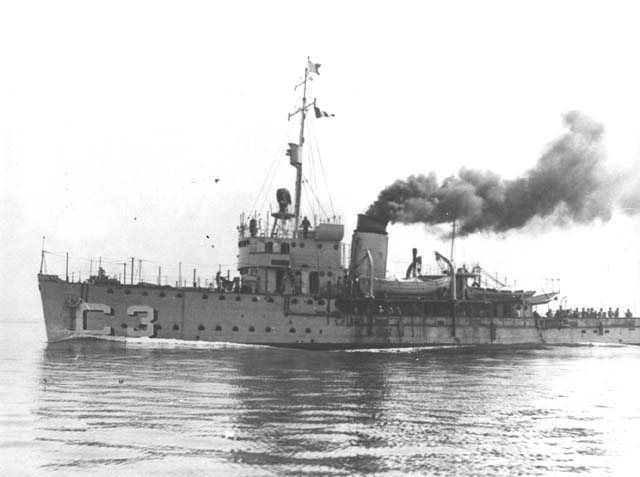
This specifically designed class, with the help of the Americans, included Cabedelo, Camaqua, Camocin, Canadela, Caravelas, and Carioca. They were operational in 1941-42 and were sent to the Mediterranean, where the Camaqua was lost in 1944, jumping on one of its own mines. The others survived until 1960.

Specifications
Displacement: 552t, 580t FL
Dimensions: 57.50 x 7.62 x 2.44 m
Propulsion: 2 shaft TE, 4 boilers, 2200 hp. 14 knots max.
Crew: 97
Armament: 2 x 76, 4 x 20 mm AA, 50 mines.
Ceara submarine tender (1915)
This specialized ship had been built during the Great War to assist the F-type light submarines deployed by Brazil at that time, especially to see them operate in Europe. In 1939, it had been modernized, opting for oil-fired machines, and its DCA enhanced by two AA machine guns. She assisted the Tupi and Humaita in the Mediterranean from 1943 and survived the war. Ceara was withdrawn from service in 1946. There was another submarine tender, called the Belmonte. She was a former German auxiliary merchant cruiser (AMC), captured in 1917. She was known before as SS Valeria and was launched in Rostock in 1912. She displaced 5227 tons GRT, was capable of 12 knots and was armed with four 4.7 in and six 6-pdr guns.

Specifications
Displacement: 4100t, 5200t FL
Dimensions: 90 x 12 x 4.30 m
Propulsion: 2 shafts VTE, 4 boilers, 8000 hp. and 18 knots max.
Crew: 180
Armament: 2 x 102 mm, 2 x 20 mm AA.
Riverine Gunboats
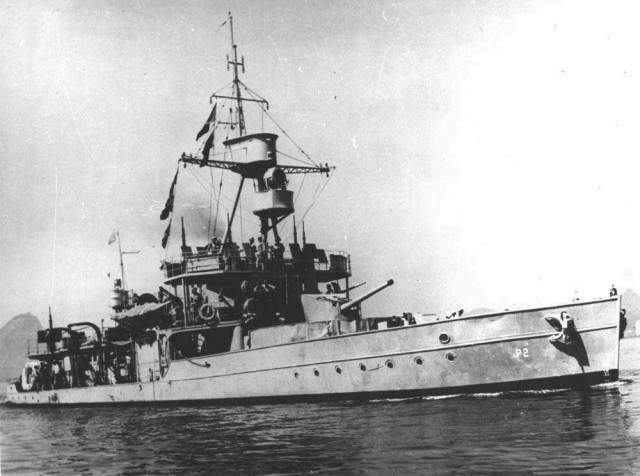
Paraguacu.
These were the Pernambuco (1910), Belmonte (1912), Parnaiba (1937), Paraguacu (1938), and Rio Pardo (1943). It should be noted that three armoured gunboats were ordered in UK priot to the war in 1913, the Javari class, bearing names of former monitors (Javari, Solimoes, Madeira). All three were seized when the war broke out and became the Mersey class.
-Pernambuco was a 470 ton river monitor, 44.5 m long, armed with three 4.7 in guns and ten machine guns. Propelled by a triple expansion engine rated for 800 ihp she reached 11 knots. She was well armoured: 102 to 168 mm on the belt, 152 mm on the turrets and 100 mm (4 in) for the decks, 89 mm for the conning tower (3-1/2 in).
She served in both world wars and was stricken in 1953.
-There were also four lighter ships (200 tons) like the Acre (i) class gunboats, 36.6 m long, one 15 pdr howitzer and 6 pdr plus four Maxim MGs. The class comprised the Acre and Missoes, both from 1904, but they were retired apparently during or before the war. Lighter still, there were also the older Jutohy and Teffe of the 1890s, also retired during the interwar.
-Parnaiba: Built at Ilha das Cobras and launched 2.9.1937, she was a 595 ton ship, 54.33 m long, fitted with two sets of Thornycroft triple expansion engines rated for 1300 ihp, which gave her a top speed of 12 knots. She was armed with a single 4.7 in gun, two QF 47 mm guns and six 20 mm guns. Her siedes and decks were partially armoured but details are not known. She was refitted in 1960 and rearmed with a 3 in gun, two 40 mm and six 20 mm AA guns.
-Paraguacu: A 430 ton ship, 44.6 m long, launched 22.12.1938 at Ilhas das Cobras, Rio. She was generally similar in armament, and machinery but will less power (reciprocating engines, 1100 hp for 13 knots). Sides and decks were also partially armored and she was rearmed and modernized in 1960, discarded in 1972.

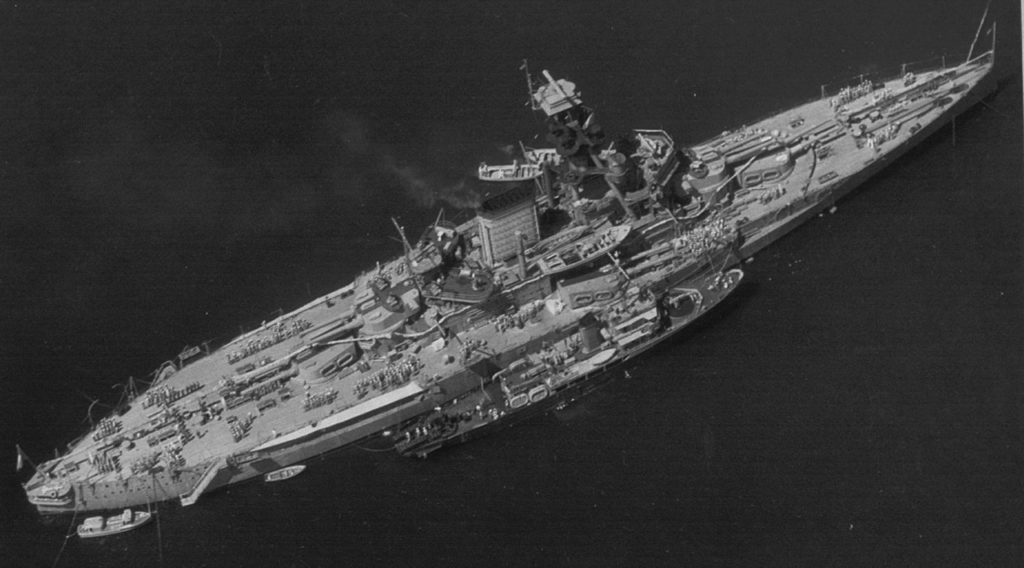
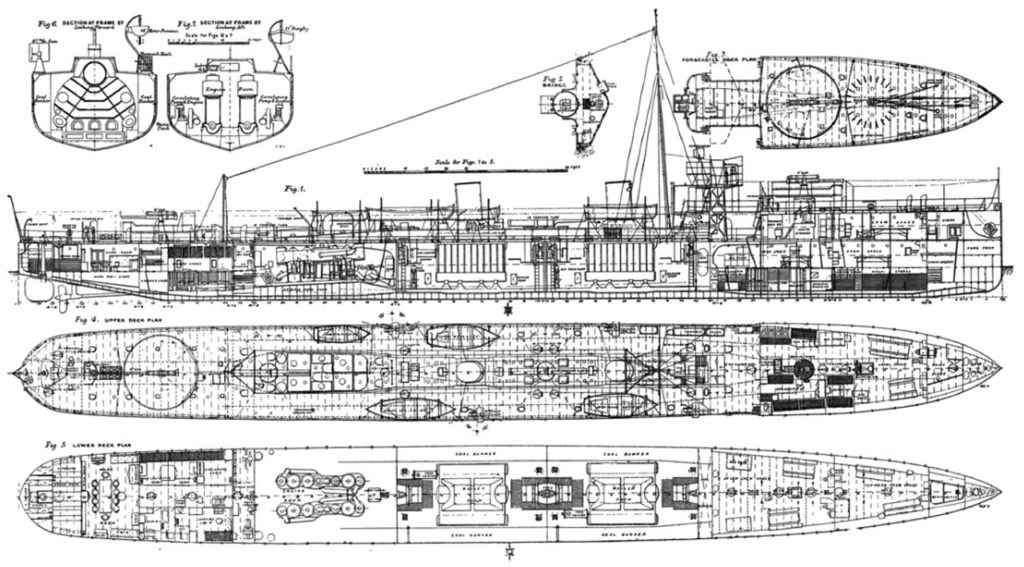
 Latest Facebook Entry -
Latest Facebook Entry -  X(Tweeter) Naval Encyclopedia's deck archive
X(Tweeter) Naval Encyclopedia's deck archive Instagram (@navalencyc)
Instagram (@navalencyc)





 French Navy
French Navy Royal Navy
Royal Navy Russian Navy
Russian Navy Armada Espanola
Armada Espanola Austrian Navy
Austrian Navy K.u.K. Kriegsmarine
K.u.K. Kriegsmarine Dansk Marine
Dansk Marine Nautiko Hellenon
Nautiko Hellenon Koninklije Marine 1870
Koninklije Marine 1870 Marinha do Brasil
Marinha do Brasil Osmanlı Donanması
Osmanlı Donanması Marina Do Peru
Marina Do Peru Marinha do Portugal
Marinha do Portugal Regia Marina 1870
Regia Marina 1870 Nihhon Kaigun 1870
Nihhon Kaigun 1870 Preußische Marine 1870
Preußische Marine 1870 Russkiy Flot 1870
Russkiy Flot 1870 Svenska marinen
Svenska marinen Søværnet
Søværnet Union Navy
Union Navy Confederate Navy
Confederate Navy Armada de Argentina
Armada de Argentina Imperial Chinese Navy
Imperial Chinese Navy Marinha do Portugal
Marinha do Portugal Mexico
Mexico Kaiserliche Marine
Kaiserliche Marine 1898 US Navy
1898 US Navy Sovietskiy Flot
Sovietskiy Flot Royal Canadian Navy
Royal Canadian Navy Royal Australian Navy
Royal Australian Navy RNZN Fleet
RNZN Fleet Chinese Navy 1937
Chinese Navy 1937 Kriegsmarine
Kriegsmarine Chilean Navy
Chilean Navy Danish Navy
Danish Navy Finnish Navy
Finnish Navy Hellenic Navy
Hellenic Navy Polish Navy
Polish Navy Romanian Navy
Romanian Navy Turkish Navy
Turkish Navy Royal Yugoslav Navy
Royal Yugoslav Navy Royal Thai Navy
Royal Thai Navy Minor Navies
Minor Navies Albania
Albania Austria
Austria Belgium
Belgium Columbia
Columbia Costa Rica
Costa Rica Cuba
Cuba Czechoslovakia
Czechoslovakia Dominican Republic
Dominican Republic Haiti
Haiti Hungary
Hungary Honduras
Honduras Estonia
Estonia Iceland
Iceland Eire
Eire Equador
Equador Iran
Iran Iraq
Iraq Latvia
Latvia Liberia
Liberia Lithuania
Lithuania Mandchukuo
Mandchukuo Morocco
Morocco Nicaragua
Nicaragua Persia
Persia San Salvador
San Salvador Sarawak
Sarawak Uruguay
Uruguay Venezuela
Venezuela Zanzibar
Zanzibar Warsaw Pact Navies
Warsaw Pact Navies Bulgaria
Bulgaria Hungary
Hungary

 Bundesmarine
Bundesmarine Dutch Navy
Dutch Navy Hellenic Navy
Hellenic Navy Marina Militare
Marina Militare Yugoslav Navy
Yugoslav Navy Chinese Navy
Chinese Navy Indian Navy
Indian Navy Indonesian Navy
Indonesian Navy JMSDF
JMSDF North Korean Navy
North Korean Navy Pakistani Navy
Pakistani Navy Philippines Navy
Philippines Navy ROKN
ROKN Rep. of Singapore Navy
Rep. of Singapore Navy Taiwanese Navy
Taiwanese Navy IDF Navy
IDF Navy Saudi Navy
Saudi Navy Royal New Zealand Navy
Royal New Zealand Navy Egyptian Navy
Egyptian Navy South African Navy
South African Navy






























 Ukrainian Navy
Ukrainian Navy dbodesign
dbodesign